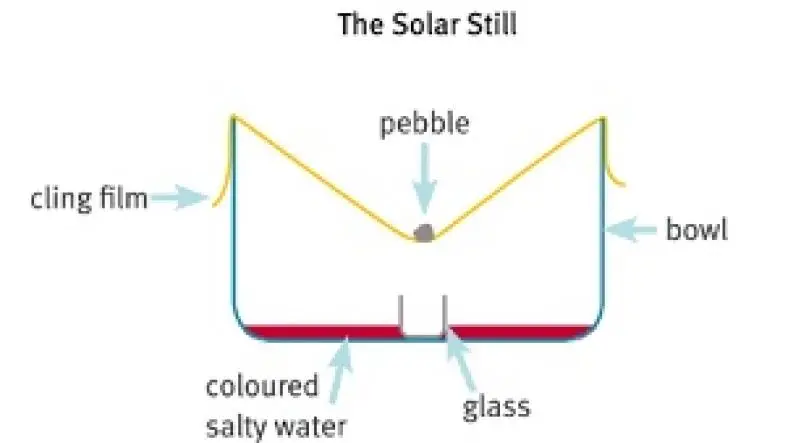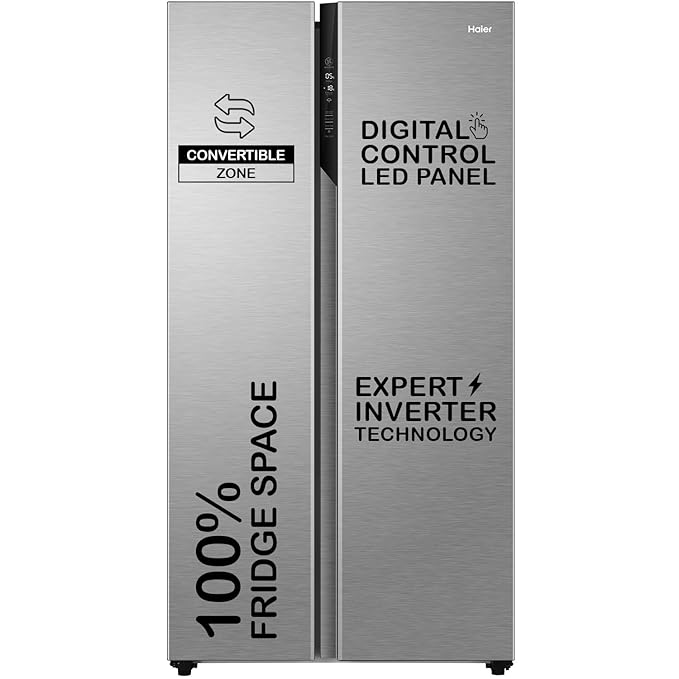Solar still is a simple yet effective device for purifying water using solar energy. It works on the principle of evaporation and condensation to separate clean water from impurities.
Here's a step-by-step guide to conducting a solar still experiment to demonstrate the process of water purification:
Materials Needed:
- Clear Plastic Sheet: To cover the solar still and capture the evaporated water.
- Container or Basin: To hold the water you want to purify.
- Smaller Collection Container: To collect the condensed purified water.
- Rock or Weight: To create a low point in the plastic sheet for water collection.
- Water Source: Impure or contaminated water (e.g., dirty water from a pond, lake, or even tap water with added impurities).
- Sunlight: Direct sunlight is required for the solar still to function.
Procedure:
- Prepare the Setup:
- Choose a sunny location for the experiment.
- Place the larger container or basin on a flat surface. This container will hold the impure water.
- Pour the impure water into the larger container. The water level should be shallow, covering the bottom of the container but not too high.
- Place the smaller collection container in the center of the larger container. This container will catch the purified water that condenses.
- Cover with Plastic Sheet:
- Cover the entire setup with the clear plastic sheet. Ensure the plastic sheet is large enough to cover the container completely.
- Seal the edges of the plastic sheet to prevent any air or water vapor from escaping. You can use weights or rocks around the edges to secure the plastic sheet in place.
- Place a small rock or weight in the center of the plastic sheet above the smaller collection container. This creates a low point for the condensed water to drip down into the collection container.
- Observe the Process:
- Leave the solar still setup in the sun. As the sun heats the impure water, it will evaporate. The water vapor will rise, condense on the underside of the plastic sheet and then flow towards the low point created by the rock or weight.
- The condensed water droplets will drip down into the smaller collection container, where it is collected as purified water.
- Collect and Test the Purified Water:
- After several hours of exposure to sunlight, carefully remove the plastic sheet and collect the purified water from the smaller container.
- You can test the purified water using a simple taste test or more sophisticated water quality testing methods, if available, to confirm its purity.
Scientific Explanation:
- Evaporation: The sun heats the impure water, causing it to evaporate. Since evaporation leaves impurities behind, only pure water vapor rises.
- Condensation: The evaporated water vapor rises and comes into contact with the cooler plastic sheet. The cooling causes the vapor to condense into droplets.
- Collection: The condensed droplets, now free of impurities, flow down to the low point in the plastic sheet and drip into the collection container.
Conclusion:
The solar still experiment demonstrates how solar energy can be used to purify water through the natural processes of evaporation and condensation. This simple device is an effective way to obtain clean water from contaminated sources, leveraging renewable solar energy to address water purification needs.
By observing and understanding this process, you gain insight into how solar stills work and the principles of water purification, which can be applied in various practical and emergency situations.
Thanks for reading the article, for more Science and Technology related articles read and subscribe to peoples blog articles.















